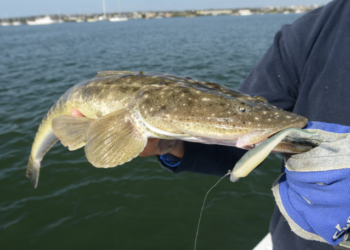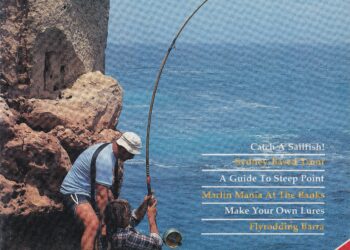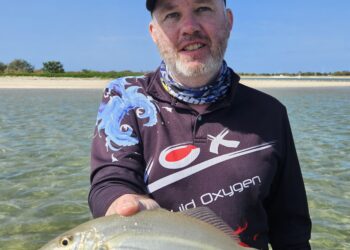
IF you’re starting out or want to learn more, the path to success when targeting estuary favourites like bream, flathead and whiting requires an understanding of the fundamentals. Read on to learn a few important pieces of information that will help you to unravel the basics of estuary fishing.
When to fish
The likelihood of success when fishing tidal estuaries increases if you time your outing around peak feeding periods. Fish are opportunistic feeders with a feeding pattern that experiences a spike in activity around the change of light and the change of tide. The change of light corresponds to dawn and dusk. Dawn sees the emergence of the sun and darkness disappearing which provides predators with increased visibility and a chance to hunt unsuspecting prey that have been exposed with the onset of daylight. Dusk, on the other hand, sees the cloak of darkness lulling prey into a false sense of security and travelling about more freely. Around these change of light periods, hunters are looking for prey that have been caught out and offer an easy meal.
Another benefit of these periods is the peace, tranquillity and lack of disruption on the water to scare the fish. Swimmers, boaties and jet skiers are more prevalent during the day so it makes sense to fish when the water isn’t being bombarded by the general public if you want to improve your chances of catching a few.
The other peak periods revolve around the change of tide. Tidal flow impacts estuary fishing in a number of ways. Baitfish and crustaceans generally go with the flow and traverse the estuary with the run of the tide – a small baitfish or prawn can’t swim against a strong tidal flow for any sustained period so they’ll generally be pushed downstream with a run-out tide or pushed upstream with the run in. Predators use stretches of tidal flow as feeding highways, often sitting in ambush and waiting for a meal to travel past them. They also take respite from the flow in an area where the run is slower, allowing them to wait and conserve energy till the tide slows before hunting for a feed around slack water. The tide also creates feeding zones around areas that are dry on a low tide and submerged on the high. As the water level rises, predators patrol the flats and rock bars while as the water level retreats they wait to attack fleeing prey. Fishermen aren’t insomniacs or night owls – fishing first thing in the morning or late afternoon will improve your chances, as will fishing around the change of tide!

Where to look
You generally find fish in areas where they are waiting in ambush or along a feeding path they traverse. Feeding highways in an estuary include channels and extended deep water stretches along with sections of the estuary where the main body of water narrows, forcing the water and marine life to travel along a confined path. If you were after an easy feed, would you be waiting out in the widest part of an estuary or in a narrower section where you could easily pounce on anything that is passing by? Similarly, a kink in a man-made retaining wall or the point if it juts out into the main body of water disrupts the flow of the tide which in turn is used as an ambush point for predators. These areas of tidal disturbance also include the tide swirling past rocky points, jetties, reefs and other formations that allow wily predators an opportunity to optimise their hunt, sitting comfortably in the proverbial shadows while waiting to attack any hapless prey that travels into their feeding zone. A bridge pylon beneath the water offers a man-made structure that deflects the flow allowing predatory fish to conserve energy while waiting for a tasty morsel to swim by. Bridge pylons are also home to invertebrates and various forms of marine growth that some predators feed on and some prey hide in. Bream are suckers for bridges, feeding on the mussels and barnacles that grow in abundance around the pylons and surrounding man-made structure.
A change in water depth also offers a hunting opportunity for predators. The edge of a hole, channel or drop-off is a classic feeding location for flathead. A flathead sits on the bottom and wriggles its body to cover its neatly camouflaged skin with the sand and silt its skin tries to mimic. The last thing an unsuspecting prawn, mullet or small baitfish sees as it swims over the edge is a puff of sand and the flathead’s cavernous mouth coming directly at it; the rest is history!
Baitfish and prawns hide in the thick of the mangroves on a high tide while predators cruise the periphery looking for a feed. As the tide recedes the baitfish flee for deeper water and you can bet those predators will be ready and waiting. A high tide also allows predators like whiting and bream to fossick over the shallow sand flats in search of worms and nippers that may be peeking out of their holes or have given away their location with the slightest puff of sand while running from one hiding spot to another – find the bait and then you’ll find the fish. Seek out locations that offer an increased chance for predators to hunt for a meal – look for a drop-off, a river bend, a flats location or cluster of mangroves, a bridge pylon, a wharf, a reef or rocky outcrop. While these locations may require a few sessions to figure out, the chances of finding fish there will be greater than over a barren expanse of featureless bottom.
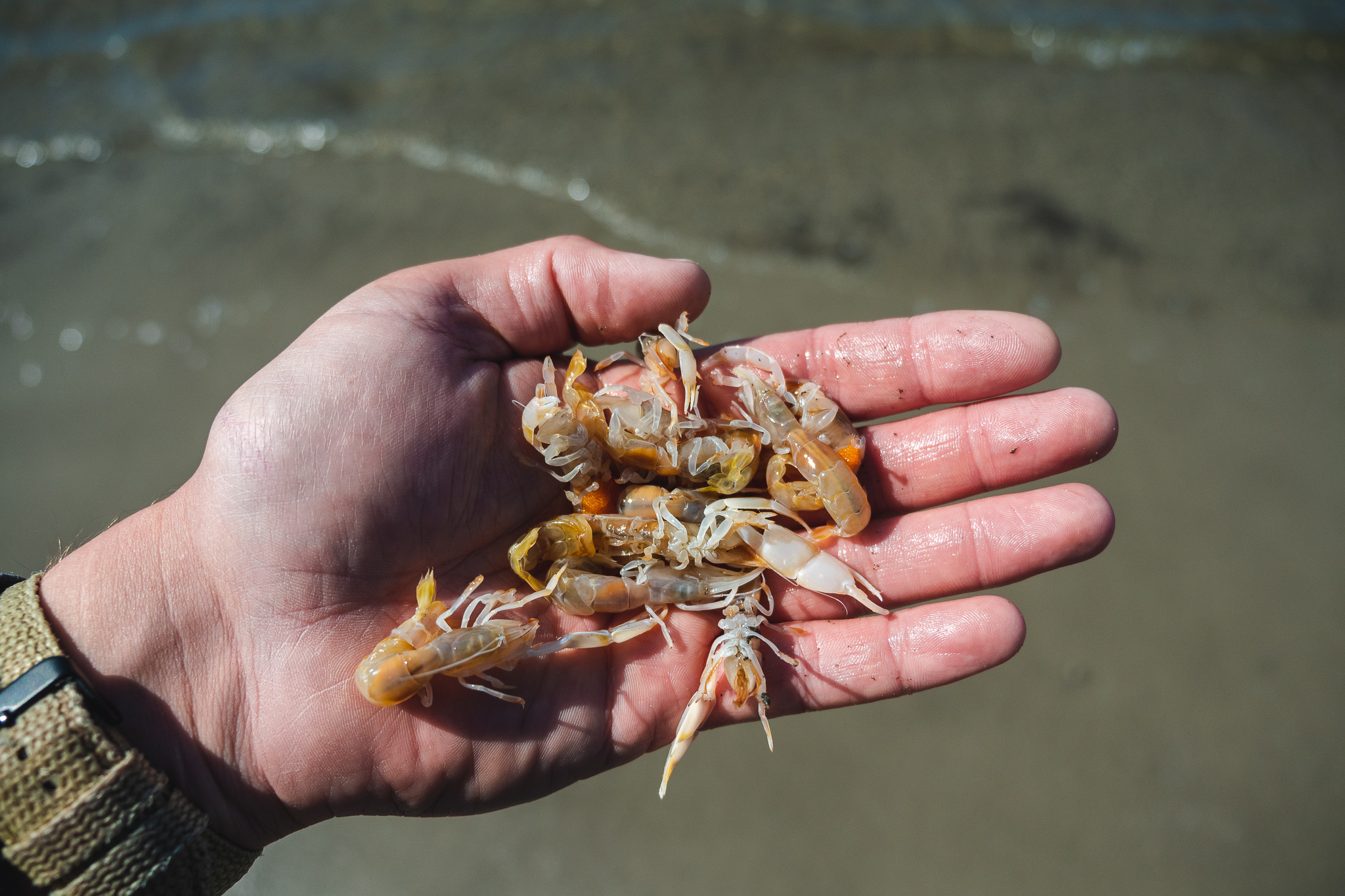
Bait selection
The key to bait selection is to use something that the fish will recognise and generally feed upon, along with using something that is fresh. The effectiveness of bait declines the further away it is from being alive and kicking; live bait reigns supreme, freshly caught and kept bait follows while the effectiveness of bait rapidly diminishes once it is frozen, abused and neglected. Imagine buying a freshly made hamburger then sticking it on the counter for a few hours in summer, freezing it and heating it up in the microwave a week or two later – yuk! It’s no wonder that a bucket of live prawns will out fish a packet of pinkish half cooked things that live in the bottom of a servo freezer. Sure, you’ll catch fish on the servo prawns but don’t expect them to out fish old mate down the river who has sourced the freshest specimens. The most common estuary baits for bream, whiting and flathead include prawns, worms (bloodworms and squirt worms), nippers, whitebait and pilchards with the last two fish baits more suitable for flathead and bream rather than whiting. A bream or flathead in Sydney’s Hawkesbury River will be able to easily identify a locally caught Hawkesbury prawn but might baulk at a fresh Queensland tiger prawn bought at the fish markets – the key point is fresh AND local. If you don’t know how to catch your own bait or don’t have the time, the best thing to do is to call a few of the local tackle shops or co-ops to see to who has the freshest supply of local bait for sale.
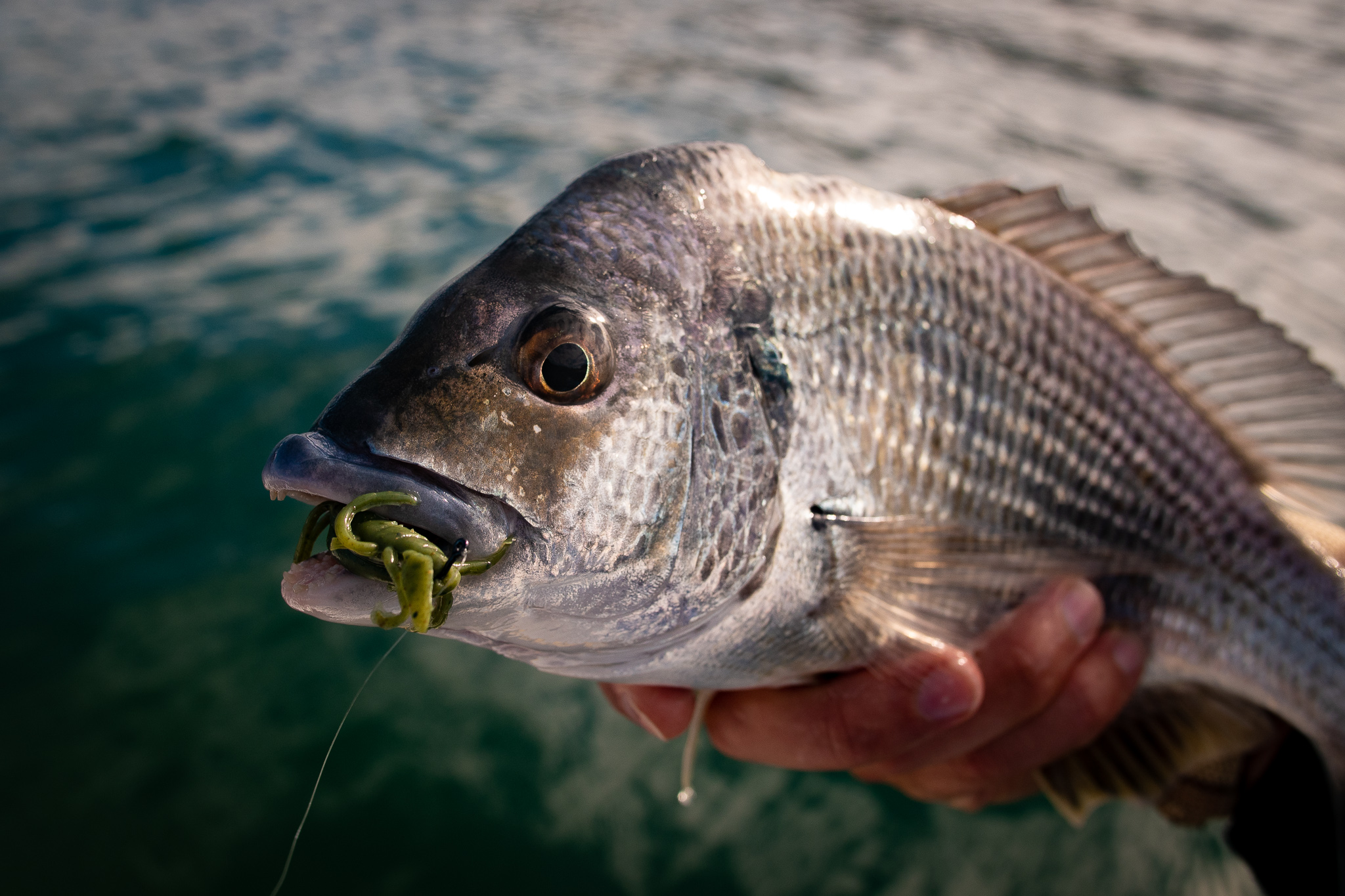
Rigs & knots
So now you’ve figured out what time to fish, where to go and which bait to use. The next critical element is to present your bait as naturally as possible. In keeping with the basics theme we’ll stick with one knot and one rig. My personal preference for a knot is the Uni because it’s strong and easy to tie in braid or monofilament (nylon) line. A good general purpose rig for estuary fishing is a running sinker rig that is lightly weighted. An unweighted presentation can be dynamite in certain conditions, however, when starting out, the addition of a light sinker will help you cast the line a reasonable distance along with helping to keep the bait near the bottom and in the feeding zone. You should choose the lightest possible sinker to match the conditions. In shallow and still waters you need very little, if any, weight. As the water becomes deeper or the current flow increases, you need to increase the sinker size to suit. As a guide you could start out using a ball sinker in a size 2 or 3 (about 10 and 15 grams respectively) – if the current flow is too strong or you need a longer cast then you could go up a size; if the water is shallow with minimal flow and you can get away with a smaller sinker then it would be ideal to step down in size. Sinker choice requires a little trial and error, if you remember to use the lightest possible then you’re on the right path. The running sinker rig itself is relatively simple to create. Thread your sinker onto your main line then tie the end of the line to one end of a swivel. Tie about 50-60cm of 3-4kg trace line if you’re targeting bream, whiting and average size flathead to the other end of the swivel then tie your hook to the free end of the trace line. The hook that you use should match the size of the bait so that the bait covers most of the hook with the hook point protruding. When you’re buying bait it makes sense to ask your tackle shop owner for a suitable hook to see if what you have in your tackle box looks to be around the right size. Refer to the fact box on page 130 for links to a few video clips on the Fishing World website which explain the knot, rig and baiting up procedure in more detail.
Get out there!
Hopefully the insights above will set you on the path to increased success, whether you’re a beginner trying to learn a few tips, a holiday fisherman wanting to catch a few fish with the kids over summer or an experienced fisherman wanting to consolidate your knowledge. Time on the water is a great teacher, however, there’s no shame in asking the bloke fishing next to you for a few tips also if you find him having more success than you are. We’re all out there to enjoy our spare time and we should all be helping anyone wanting to learn how to piece together the basics for catching a few fish in the estuary.












